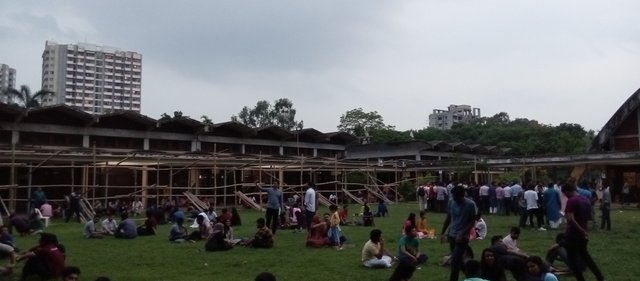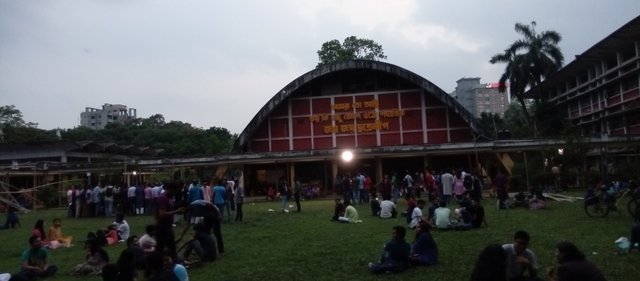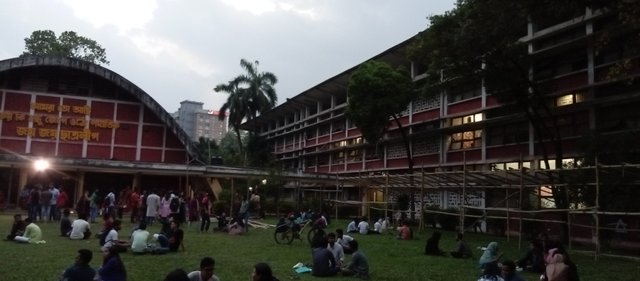City Of Concrete.
Hello!!!
My dear friends!
This is @md-raju from #Bangladesh 🇧🇩

| Subject | Descriptions |
|---|---|
| Shot by | md-raju |
| Mode | Normal |
| Device | Symphony |

| Subject | Descriptions |
|---|---|
| Shot by | md-raju |
| Mode | Normal |
| Device | Symphony |

| Subject | Descriptions |
|---|---|
| Shot by | md-raju |
| Mode | Normal |
| Device | Symphony |
The University of Dhaka opened its doors on July 1, 1921, with Mr P. J. Hartog as its first Vice-Chancellor. Mr Hartog was the Academic Registrar of London University before being appointed as the Vice-Chancellor of the University of Dhaka. The university, with unitary teaching and residential character, started its journey with three Faculties: Arts, Science and Law and with 12 departments. The first convocation of the university was organised in 1923. At the convocation, Chancellor of the University Lord Lytton mentioned that the university served as compensation to the Muslims of East Bengal for the annulment of the partition of Bengal. He further added, "This University is Dacca's greatest possession, and it will do more than anything else to increase and spread the fame of Dhaka beyond the limits of Bengal or even of India itself." Though the university has a political origin, it was never intended to serve the interest of a particular community. In the early years of its history, more than 80 percent of its students and teachers were Hindus.
Within a few years of its establishment, the university became the intellectual centre of Bengal. In 1926, the great poet Rabindranath Tagore was accorded a grand reception at the university. The following year, rebel poet Kazi Nazrul Islam was also given a grand reception. In 1936, Sarat Chandra Chatterjee was invited to the university. He and Tagore were awarded D. Lit (Honoris Causa) by the university in 1936. The rebel poet was awarded D. Lit (Honoris Causa) in 1974.The number of students at the university at the start of its journey was 877. This number gradually increased. Despite many hurdles, Dhaka University produced 55,306 graduates from 1921 to 1973. These graduates were manning teaching posts at schools and colleges. Many of them were also appointed at government jobs. It is noteworthy that 135 research scholars obtained D.Sc., PhD degrees by then.
The middle class that the university produced acted as a catalyst for social and political change. The freedom of intellect movement was started in this university in 1926. The progressive movement, nationalist movement and movement against the British rule had found places in the university as well. The university played a pioneering role in many other movements; to cite a few examples: Pakistan movement, language movement, the movement against disparity, the movement against communal riots in 1964 and 1966, the six-point movement, '69 mass upsurge, non-cooperation movement of 1971, and the liberation war of Bangladesh.
In 1947, there were five Faculties and 17 teaching departments in the university. At present, the university consists of 13 Faculties, 83 Departments, 12 Institutes, 20 residential halls, three hostels and more than 56 Research Centres. The number of students and teachers has risen to about 37,018 and 1,992, respectively. Presently, the university enrols more than 5,800 students, on a merit basis, in the first year Honours Programmes in different disciplines. It runs four-year Bachelor and one-year Masters Programmes and also trains a large number of researchers in various fields. More than 1,262 PhD and 1,217 M.Phil. researchers have obtained their degrees from this university. It was identified by "Asia Week" as one of the top 100 universities in Asia for three consecutive years (1998-2000 AD). The university has rendered a valuable service to the higher education of Bangladesh. It is time now that more attention is given to the quality of education and research rather than the quantity. In the sixties, the university was not that big, and the number of departments was fewer, with a limited number of students. Teacher Now, in the era of the Fourth Industrial Revolution, the global focus is on world-class universities. With a little extra effort on the part of the teachers, researchers, students and, of course, with the help of the government, the University of Dhaka can graduate to a world-class university.
Source